Step by step6:01
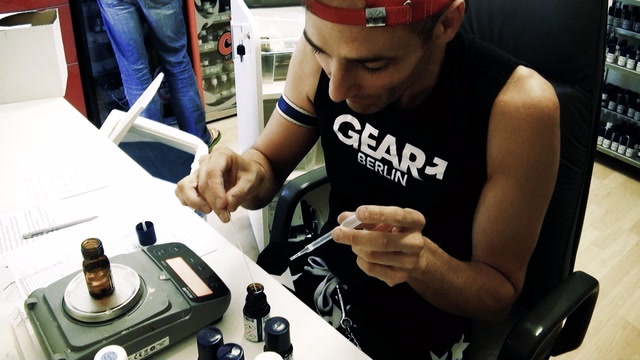
Step by step6:01
There is more than meets the eye
At its core, the practice of perfumery has not changed very much since Renaissance times. The process can be described along a sequence of clearly defined steps: The perfumer starts with some vague ideas which are evoked by certain olfactory ingredients. Thereafter, this rather open process is narrowed down to a precise formula determining the perfume composition in quantitative terms - how much of each material is needed to achieve the ideal balance. Accordingly, the formula is precisely weighed in the laboratory. Each step is accurately documented on a spreadsheet. Using paper strips the perfumer smells and evaluates the scent. Alternative variations are analyzed. The formula is then modified based on detailed analysis. This sequence of steps is repeated until the olfactory experience meets the expectations of the perfumer: Calculating the formula, weighing, evaluating & analyzing.
Nobel laureate Herbert Simon once analyzed how in oil painting every new spot of pigment laid on the canvas creates some kind of pattern that provides a continuing source of new ideas to the painter. Hence, the painting process unfolds as a process of cyclical interaction between the painter and canvas in which current goals lead to new applications of paint, while the gradually changing pattern suggests new goals. In the case of scent development, the cyclical interaction involves the competent use of additional objects (e.g. the formula). However, the practice of perfumery cannot be reduced to this technical dimension. Instead, it is also a meaning and sense-making activity. «To become a perfumer you don’t learn to smell like one – you learn to think like one», Avery Gilbert once noticed. This clip provides a quick primer on this practice.
Wet dog: Chasing the villain5:52

Wet dog: Chasing the villain5:52
This clip features a puzzling mystery Christophe encounters when developing a new scent for Strangelove NYC
In most cases, a perfume is meant to be a pleasurable odor. Technically, it is a mixture of essential oils, aroma compounds, and solvents used to provide an agreeable scent. Yet, the process is more complex than often explained. A useful fragrant ingredient might turn out to be an objectionable odor in a specific combination or concentration: Skatole (from the Greek root skato – meaning «dung») for example, is an indole with a strong fecal odor at high concentrations, but it is often used in perfumery at a much lower concentration where it has a pleasing floral scent. Following the development of a jewel-like fragrance we witnessed how Christophe Laudamiel and Christoph Hornetz suddenly discovered an unpleasant facet, an annoying animalic note. Laudamiel calls it a «wet dog» that only appears after some delay. The two perfumers are puzzled. The phenomenon seems to be really special, if also undesired. They investigate the composition, ingredient by ingredient. In the end, the detective search for malodor delivered a suspect for which Christoph Hornetz had noticed the same unexpected effect in other previous instances: Natactone®. The odor of this chemical compound is often described as «tropical coconut, tonka bean and tobacco». Thus, this clip tells the detective story of a puzzling mystery.
The beauty contest1:50
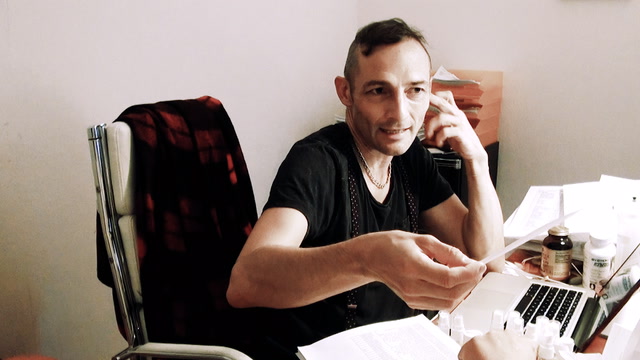
The beauty contest1:50
Longevity, projection and sillage is not the full story...
Following an experimental approach, the perfumer repeatedly needs to evaluate the results of his formula revisions. This clip zooms in on this specific situation. «This is gorgeous!». Christophe seems to be happy. We witness a deep satisfaction. The evaluation goes beyond longevity, projection and sillage – criteria that are often used to measure the technical performance of a perfume. All this might happen silently under the surface. However, what we see is the creator’s deep affection for his creation, as if he were treating it as an attractive person.
Encounter with a perfume icon1:05

Encounter with a perfume icon1:05
Shalimar is an iconic perfume. But why is it relevant today?
Successful cultural products blend familiar and novel elements. On the one hand, consumers relate to scents that remind them of others they like. On the other hand, they also appreciate the unexpected pleasure of the new. Depending on the overall position of the scent, the actual relatedness of a perfume can vary from that which is entirely derivative of an existing scent, to that which is clearly building on an existing scent, to that which is predominantly original but shows subtle references to an existing scent. This video captures the moment when a modification reminds Christophe of Shalimar, a great perfume created by Jacques Guerlain in 1921. Its story is part of the wider social and cultural matrix in perfumery. Accordingly, the composition was inspired by Mumtaz Mahal, the wife of Shah Jahal, a 17th century emperor of India. Traditionally, the imitation or matching of an iconic perfume serves as a method of learning the craft. In this situation the sudden connection to Shalimar prompts Christophe to return to the formula. To his surprise, the formula is rather different from Shalimar’s. Yet, the scene documents the remaining influence of an historical icon for cultural production.
Beyond words1:43
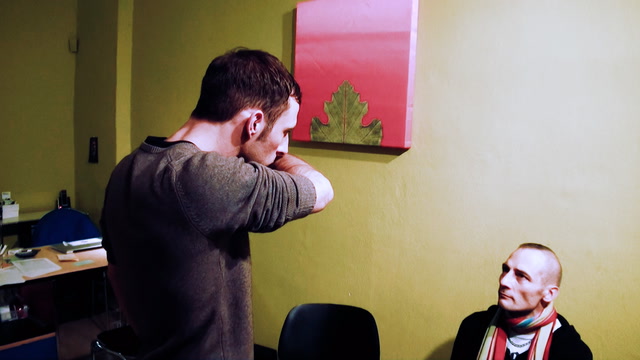
Beyond words1:43
Bodily ways of knowing help Christophe go beyond the limitations of an individual creator.
Christophe Laudamiel once described a perfumer as someone «who masters the behaviour and the perception of volatile molecules by the nose and the brain». Accordingly, a perfumer definitely knows how to create a perfume. Yet, this clip reveals the limitations of an individual creator. Practices of collective smelling and sense-making are needed to challenge and confirm the creative path. In this respect a scent development project serves as an extreme case: Verbal utterances account only for a small fraction of human communication. In addition, body language & posture, silence, gestures and face grimaces function as nonverbal feedback. At first sight, this clip might seem boring because there is not very much happening. At a deeper level however, one can notice the deep uncertainties a creator bears. Experiencing scents, sensing, and sense-making emerge mutually in active and reflective practices that have to cope with the paucity of language to describe scents and engage with bodily ways of knowing.
Back to origins1:40
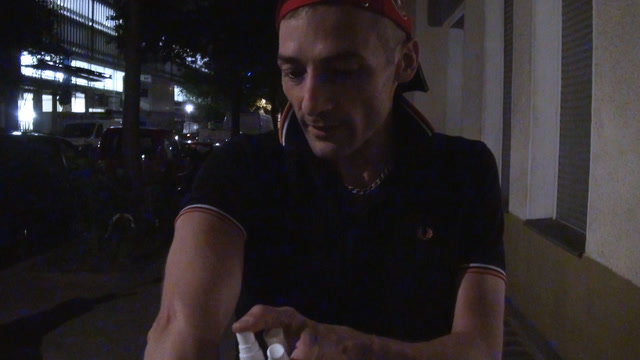
Back to origins1:40
Moving forward can actually imply going back to an earlier version.
In theory, the development process unfolds as incremental steps of improvement. In practice, however, progress is often less clear. This is particularly the case in cultural products that serve an aesthetic, rather than a clearly utilitarian purpose. Standards of quality for creative products derive from abstract ideas rather than clearly defined technical standards and performance features. Creative industries sell identities and experiences. Cultural goods «derive their value from subjective experiences that rely heavily on using symbols in order to manipulate perception and emotion». Consequently, a perfume is increasingly valued for its meaning. «I may like the grapefruit now again», Christophe remarks incidentally in this clip. He had just moved from working with blotters to evaluating selected scent modifications on his skin. Moving forward can actually imply going back to an earlier version.
Olfactory discoveries1:18
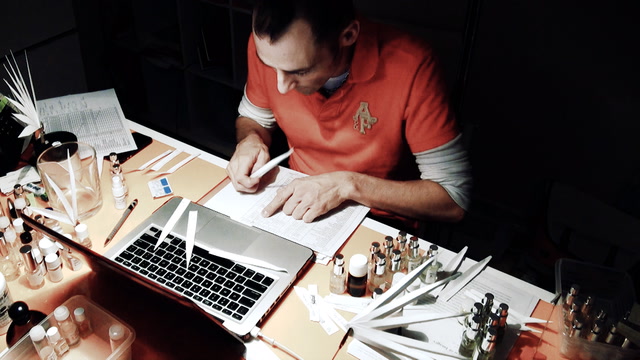
Olfactory discoveries1:18
Creativity abounds in myths about natural born talents. Yet, it is the doing that makes the difference.
Perfume-making, without a doubt, is a creative practice. However, myths abound about the creative genius as a natural born talent, capable of transforming everything he touches. The limitations of this notion of creativity are increasingly recognized. The blackbox of creativity is opened and little things surface: Practices of creativity! Creative people are open to new experiences and revel in the wonder of the unfamiliar. To paraphrase the Austrian writer Marie von Ebener-Eschenbach: «Wonder does not exist in those incapable of being surprised.» This and many other videos on scentculture.tube show how Christophe allows himself to experience surprise, puzzlement, or confusion in situations he finds uncertain or unique. In this case we see him openly experiencing the wonder that comes with smelling olfactory materials. He subsequently reflects on the phenomena that overtook him, and speculates on how it reshaped his previous understanding of the materials. It appears a culture of surprise is essential for a creative economy.
Making of Hemingway in 6-Major4:08

Making of Hemingway in 6-Major4:08
An upcoming gallery show changes the rules of the game.
«Clients are the difference between design and art», as a common saying goes. In fact, it is the client who sets the goals, decides on the budget and approves the final scent. Hence, perfumers work under constraints defined by the client whereas creative work is often associated with freedom and autonomy. Yet, constraints can also be helpful because they stimulate creativity rather than suppress it. This clip shows how Christophe copes with a set of self-defined constraints and highlights the importance of independent work for the creative practice. A few days later, the project Hemingway in 6-Major was actually exhibited at a fancy gallery in Chelsea.
Excel-ing a scent1:40

Excel-ing a scent1:40
Have you ever thought that the fleeting experience of a scent boils down to something as prosaic as a spreadsheet?
Scents appear ephemeral, volatile, elusive, and transient. Thus, one of the main challenges in the process of scent development is how this seemingly immaterial experience is materialized, that is, how the perfumer moves from first ideas to the final product. At the end of the day one needs to break down the scent into numbers. Along this experimental journey a spreadsheet is used for writing formulae, analyzing modifications and documenting the various stages of the process. A common perfume is composed of odorous materials, using sets of approximately 15 to 80 natural or synthetic ingredients selected from an olfactory palette of approximately 2500 available ingredients. Some of these ingredients are single molecules whereas natural ingredients are combinations of 50-300 molecules themselves. The final product is the result of several dozen smaller experiments that are documented horizontally on the spreadsheet. Vertically, the spreadsheet lists the ingredients used in the experiment. The precise documentation allows the perfumer to go back to an earlier modification if needed. A typical scent development process requires several dozen stages. But we also witnessed extreme cases with several hundred modifications. Have you ever thought that the fleeting experience of a scent boils down to something as prosaic as a spreadsheet?
Evaluative moments2:33

Evaluative moments2:33
Three professionals engage in smelling and discussing an advanced modification of Meltmyheart, a fragrance by StrangeLove NYC.
We see how Christophe Laudamiel, Christoph Hornetz and the flavorist Marlene Staiger spontaneously share their impressions and associations. Apparently, there is no one way of evaluating a scent. A closer look reveals how micro-practices of smelling and using blotters can differ. Christophe is particularly interested how the other two experience a certain effect that he describes as «hot metal effect». The subtitles show how the three professionals cannot agree on what the dominant note of this scent smells like: caramel, coconut and hot metal stand next to each other. A shared interpretation of what they are actually smelling seems to be rather unimportant. Yet, something is achieved in this communication. It is neither explicit agreement nor disagreement. Instead it is the affective experience the three professionals express and collectively interpret as «good». And it is this affective experience that might be key to understanding how organizing is accomplished in a creative context. Is it possible that affects really constitute an organization?
Key quotes with this tag
Images with this tag

Courtesy of scentculture.tube
Working through the notes while writing formulas for modifications: This is what Christophe refers to as “creating”.

Traditionally, the imitation of historical perfumes was at the core of perfume education. Copy cats and other symptoms of an incestuous industry are deeply ingrained in the sector’s beliefs and structures. Whether this is the hidden message of this illustration remains an open question. Jellinek, P. (1949). Praktikum des modernen Parfümeurs. Wien: Urban & Schwarzenberg.

Courtesy of scentculture.tube
Sebastian Fischenich, the creative director of Humiecki & Graef, working on the briefing.

Courtesy of scentculture.tube
A visual concept by Sebastian Fischenich, the creative director of Humiecki & Graef. The concept plays an active role in numerous situations (e.g. in this interaction).

Courtesy of scentculture.tube
An early design draft for Club Design by The Zoo. Later this perfume became a finalist at the Art and Olfaction Awards.

Courtesy of scentculture.tube
Some folders on a shelf at Dreamair. The label «GCs» might stand for gas chromatography. We have never seen anybody opening the folders.
All Tags
- Affect
- Ambience
- Ambiguity
- Analogy
- Analyzing
- Artifact
- Associating
- Beyond words
- Briefing
- Christophe Laudamiel
- Classifying
- Consuming
- Culture
- Deciding
- Desk work
- Embodiment
- Ephemeral
- Ethnography
- Evaluating
- Experimenting
- Hemingway
- Humiecki & Graef
- Industry
- Ingredient
- Interaction
- Labelling
- Laboratory
- Metal
- Modifications
- Mundane work
- Orange Flower
- Paper
- Presenting
- Sense-making
- Shalimar
- Smelling
- Storytelling
- Still life
- Strangelove NYC
- Translating
- Visual
- we are all children
- Words